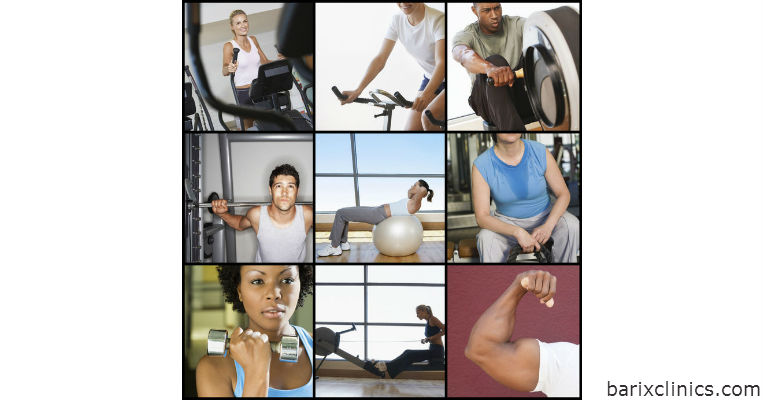B is for balance. The most important step with exercise is the first one. Lace up your shoes and go for a walk—then build from there. Make sure you set up a balanced routine that covers all the bases and provides the most benefit for your effort. A well-rounded exercise routine doesn’t rely on just one activity, but a variety of activities which complement each other.
Aerobic exercise, often referred to as cardio, is the cornerstone of most exercise programs. Aerobic exercise helps your heart, lungs and blood vessels transport oxygen more efficiently throughout your body. It includes any physical activity that uses large muscle groups and increases your heart rate like walking, jogging, biking, swimming, dancing, and water aerobics.
For most healthy adults, the Department of Health and Human Services recommends at least 150 minutes a week of moderate aerobic activity (walking or the equivalent). That breaks down to 30 minutes of brisk walking 5 days a week. As your fitness progresses, you can work harder for a shorter period of time for a minimum of 75 minutes a week of vigorous aerobic activity (running or the equivalent).
Strength training is another key component of an exercise program. At least 2 times per week is recommended to increase bone and muscle strength. Strength training can come from various resistance machines, free weights, resistance bands or your own body weight (push ups, sit-ups, squats). Give your muscles a day off between strength training sessions to recover and build muscle.
Core exercises focus on the muscles in your abdomen, lower back and pelvis. Building up your core muscle strength and flexibility cranks up the power for every move your body makes; it also enhances balance and stability and protects you from injury. A core exercise uses the trunk of your body without support, like abdominal crunches.
Stretching exercises improve flexibility, improve range of motion in your joints, promote better posture, and can even help relieve stress. The best time to stretch is after you exercise when your muscles are warmed up.


